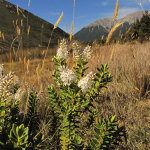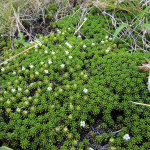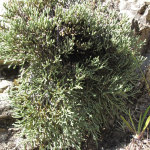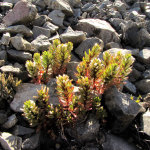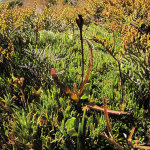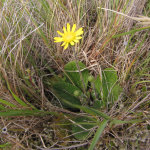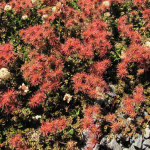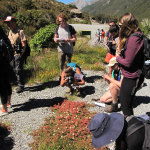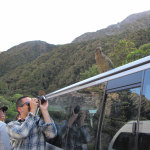January 20, 2015
Botany is a hard field to find instruction in let alone an 8 day intensive field botany Summer Workshop course. The University of Canterbury in Christchurch, NZ offers this class for their Biology graduates. Non-graduate students were allowed to also take the course so I was able to take advantage of this wonderful class.
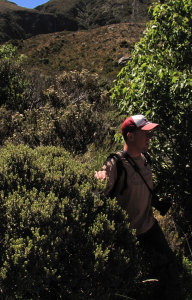
Pieter, plant ID, Temple basin
We spent the 8 days at the University’s Mountain Biological Field Station at Cass, which is in the Southern Alp area west of Christchurch. It was a big class, 22 of us, a good mix of University biology students as well as some of us older folk who were not students but wanted to learn more botany.
Our instructor Pieter Pelser did an excellent job of cramming a lot of information into 8 days and was always available to help with any questions. We actually covered everything that was in the course description, which was a lot.
Tuesday night we arrived at the station, had a brief orientation and sorted out our rooms and bunk beds. Wednesday morning we had a short talk about how to use the plant presses then visited the nearby research area to collect plants and begin learning their Latin names. We spent the evenings in the station’s very well equipped lab rooms processing our plants and making our portable herbarium books. I was a little slow to catch on to the frenetic rhythm of the course, it has been a long time since I have been at University and needing to worry about exams and assignments. So it took me awhile to remember the Latin names (and correct spelling) with the corresponding plants but amazingly enough the brain did kick in after several days and I started recognizing the plants and their names in the field. The spelling part…I’m still working on.
Keying out the plants was also another aspect of the course we needed to learn. I never was able to key a plant out correctly during the course but came close. The more one does it and the more you study the plants the more you start to understand the verbiage and what to look for. Thank goodness for illustrated plant terminology books for those of us that need visuals to understand the words used to describe plant terminology.
In the evening we pressed whatever plants we had collected that day. These were to be mounted on the herbarium sheets later in the course.
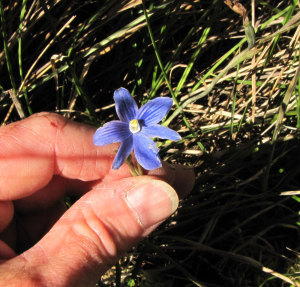
Thelymitra-cyana
The next day we had a photography workshop and practiced out in the field photographing plants in the research area. Later we were to upload our photos onto the http://naturewatch.org.nz .Good website if you are looking for NZ plants or want to post yours.
Friday we headed east up to Temple Basin, a higher elevation, slightly wetter, and containing plants we had not seen in the other areas; Oleraria, Drosera, Halocarpus, Acheane, Veronica and others. We spent most of the day climbing around the uneven terrain moving maybe 20 feet and hour. We were not allowed to pick specimens, as it was the Department of Conservation (DOC) land so we photographed what we found.
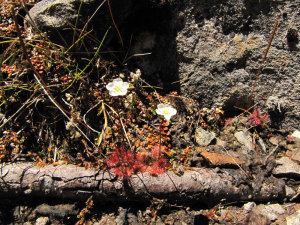
Drosera spathulata, small carnivorous plant
Saturday we went to the nearby Hawdon River to collect plants growing on the rocky riverbed, which included; Raoulia, Epilobium, and Helichrysum species. Followed by another evening processing our samples for our portable herbarium, and a spot-ID quiz…I was not ready for that one!
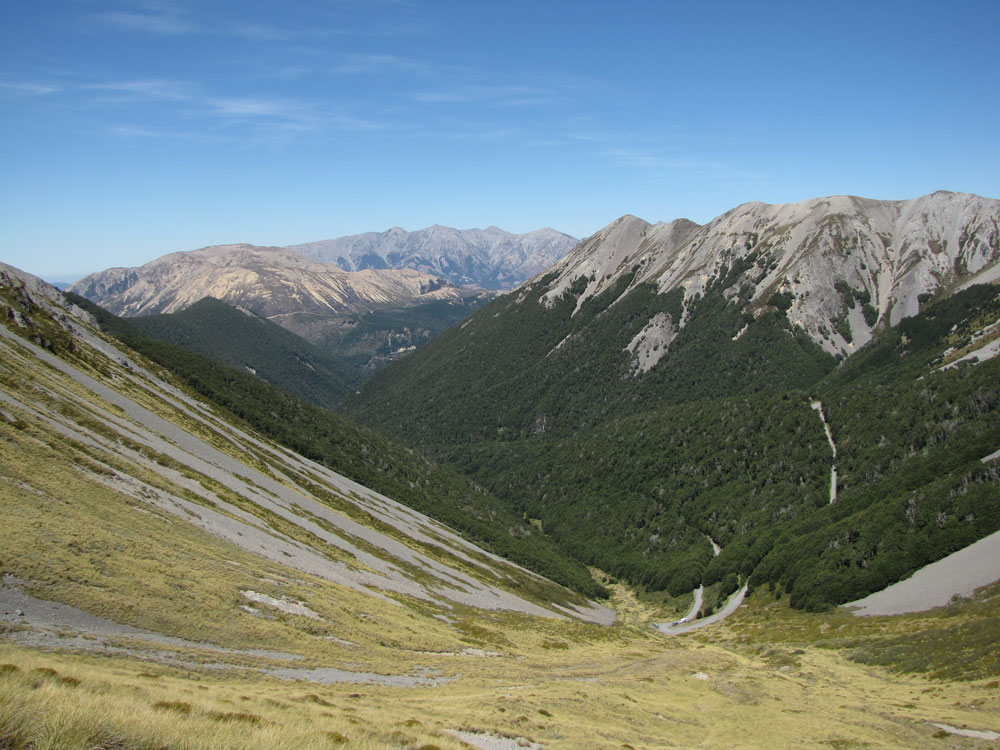
Cragieburn-skifield, looking down from where we started
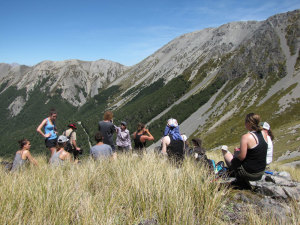
Lunch break at the top of ski field.
Our final plant-hunting outing was to a ski field in the Craigieburn range. The plants in this alpine environment I was most familiar with…maybe not by their Latin names but I recognized the raoulia’s, celmisia’s and dracophyllum’s, among others that inhabit this area. It was a very steep walk up the mountain but there were an amazing amount of species tucked away in the wet areas and rocky outcrops. From there we went over to a nearby accessible scree and found more interesting plants adapted to the constant moving of rock slopes; Epilobium pycnostachyum and Ranunculus haastii (a plant I had painted several years ago in another location),
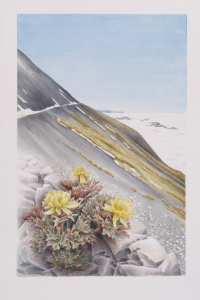
Ranunculus Hastii
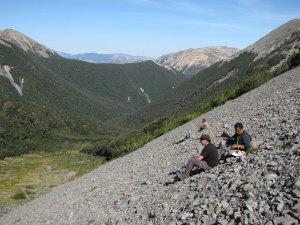
Scree break
Monday we had a break from plant hunting and worked on mounting our now dried plants on Herbarium sheets. This part I enjoyed, it was artistic and very meditative.
Tuesday we spent the morning learning how to do a REESE (Reconnaissance) plot at the Cass research area. This consisted of making 20 x 20 m plots and then recording the plants found in it along with other data, like slope, GPS coordinates, terrain, hill or flat, plant height and so forth. It is a good way to study ecosystems, plant ID, species diversity, and monitoring of invasive species.
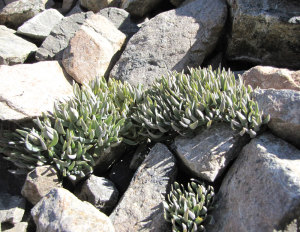
Stellaria roughii scree plant
In the afternoon we used the time to complete assignments and study for the exam on Wednesday.
Wednesday was our last day and day of the exam …thank goodness I didn’t need the marks… Then it was clean up time and back to Christchurch…where it was pouring rain. We however had lovely weather the whole time we were at the station. I would highly recommend this course if offered next year.
- Veronica sp.
- Phyllachne colensoi
- Helichrysum intermedium
- Epilobium pycnostachyum
- Drosera arcturi
- Brachyglottis bellidioides
- Bidi Bidi
- Identifying plants
- A Kea break from plants

